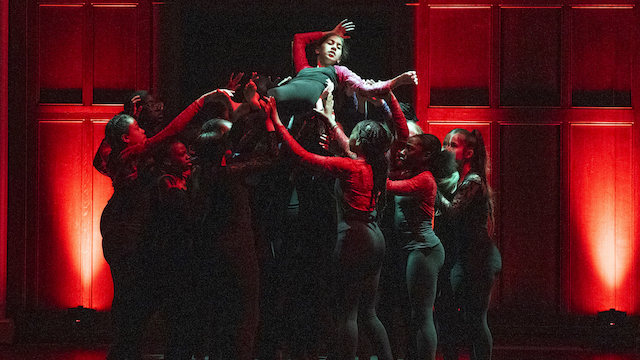What is the biggest misconception people have about dance?
People are finally understanding that ballet dancers are human beings too. We’re actual people! For a long time everybody thought of dancers as unattainable and so glamorous – but actually, we’re just like everybody else. To be relatable is a huge thing in today’s world. Any time you can follow a dancer on social media or see their daily life, you feel: they’re like me, but they’re just a ballet dancer. That’s been a huge thing I’ve seen through my YouTube channel.
How did ballet get its hooks into you??
I started dancing as soon as I could walk. Anytime my parents had classical music playing, I was completely transfixed. My mom tells me that I said, ‘Mommy, I want to be the music.’ Ballet was the only thing I ever wanted to do. The story goes that when I was 18 months old, the Bolshoi Nutcracker was on television. I had a teddy bear with a tutu on, I took the tutu off the teddy bear, put it on me and started dancing. That was it from day one. They tried to put me in other activities at school, but ballet was the only thing that stuck. And it’s still stuck.

You went public about the body shaming you experienced at Miami City Ballet. What does that do to a dancer?
Every ballet dancer has something about their body they don’t like. Oftentimes, your weight is criticised, and it’s very difficult to come out of that without some sort of mental struggle or eating disorder. I’ve heard people say to dancers, that was great, if you lost five pounds it would be even better. I don’t know even how this started – because if you look at much earlier dancers like Anna Pavlova, they were never that thin. We’ve switched over into thinking that you have to look like a prepubescent child in order to have the proper lines in ballet. One of the hard things about being a woman is so many of us looked quote, ‘perfect’ when we were 14, 15, 16. You go through puberty and these natural changes and suddenly it’s like, ‘Ooh, now you’re too big.’ I’m just becoming a woman, yet you want me to fight against that? It’s a very worrisome issue in the ballet world.
What is the one thing that teachers could do to break the patterns that you experienced?
It’s not what you say, but how you say it. I think we need to get rid of terms like ‘Why are you doing this?’ or ‘Why are you not putting your feet like that?’ Why don’t you rephrase it and say, ‘make sure you remember to point your feet.’ You can say exactly the same thing, just in a more encouraging, positive way. I remember the teachers who were encouraging – that’s when I improved. Screaming at students, in my opinion, doesn’t work. You’re damaging them and they’re going to feel like failures, to be quite frank. So when I teach, I find the positive thing, even if I’m giving a correction. What I love about teaching is the mentoring aspect. I like students to walk out of my class happier than when they came in.

Why does dance matter to you?
It’s my form of expression. It’s my form of feeling free. I’ve never felt more like myself and free than when I’m dancing. I was a very shy kid growing up, a child that would never say anything. Then I would get in the studio and my teacher would be like, Where’d that come from? It’s my freedom, and it’s something that I love helping other people with, because it’s so many other people’s passion as well. For me, it’s just life.
Why Dance Matters
Why Dance Matters is the RAD’s podcast – a series of conversations with extraordinary people from the world of dance and beyond. We hope these insightful personal conversations – hosted by David Jays, editor of Dance Gazette – will delight and inspire you.














